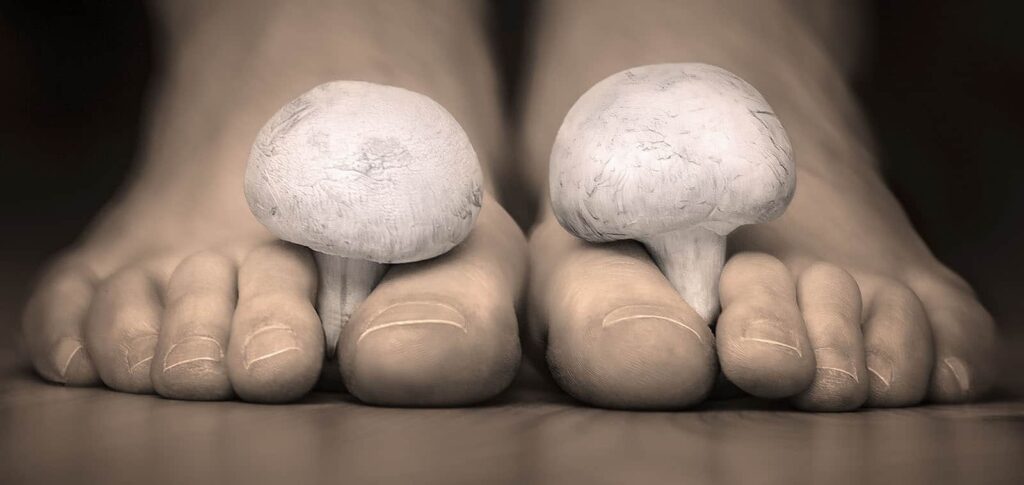What is an Athlete’s Foot? –Learn more about its Symptoms, Causes, and Prevention
Athlete’s foot (also known as ringworm of the foot or tinea pedis) is a fungal infection that causes red, dry, flaking skin, sometimes accompanied by pain or itching.
The condition usually occurs between the toes or on the soles or sides of the feet. In its acute stage, the infected foot exhibits blisters that itch or weep. Athlete’s Foot can spread to the toenails, causing chronic fungal infections. Often when a patient thinks the feet are only dry and cracking, Athlete’s Foot is responsible for the problem.
Athlete’s foot symptoms
The symptoms of athlete’s foot affect the feet, particularly the toes. Any toe can be affected, but the skin between the outermost toes (the fourth and fifth toes) is most commonly involved. Fungal infections can sometimes spread to the soles of the feet.
Symptoms of athlete’s foot can include:
- A moist, itchy, red or flaky rash between the toes;
- Cracked, scaly or peeling skin;
- Stinging and burning of the skin between the toes or on the soles of the feet if the skin becomes cracked or split;
- Itchy blisters between the toes (or on the sides of the top of the feet) that leave scales when they burst; and
- A dry, scaly rash covering the soles and extending up the sides of the feet (commonly called ‘moccasin tinea’).
What causes athlete’s foot?
Athlete’s foot is caused by a group of fungi called dermatophytes. They thrive in warm and moist environments like showers and changing rooms.
The feet can become infected by direct skin-to-skin contact with another person who has athlete’s foot or through contact with contaminated surfaces or objects. The fungus can also spread from the feet to other parts of the body.
Anyone can get athlete’s foot (although it is rare in children), but it is more likely to develop when feet are exposed to warm and moist conditions. Factors that increase the risk of infection include:
- Walking barefoot in public places with wet floors, like changing rooms and showers at the gym and swimming pools
- Wearing tight-fitting, closed-toe shoes
- Humid conditions or sporting activities that make feet wet, warm, and sweaty
- Poor foot hygiene—not washing and drying feet regularly, or wearing the same socks or shoes for too long
How to prevent athlete’s foot
Here are some ways on how to prevent from getting this condition.
- Avoid walking barefoot in public areas, and wear footwear in showers or changing rooms at the gym or swimming pool
- Wash feet regularly, and make sure they are thoroughly dry—particularly between the toes (pat dry instead of rubbing)
- Use a separate towel for feet, and wash towels and sheets regularly in hot water
- Wear breathable shoes and take shoes off when at home
- Change socks regularly—breathable cotton socks are better than synthetic socks
- Don’t share towels, socks, or shoes with other people
- Avoid wearing shoes that make feet hot and sweaty, and use an antiperspirant to limit excessive sweating
- Avoid wearing the same pair of shoes every day and disinfect shoes regularly
Are you suffering from this condition? One of our podiatrist can assist and then recommend what treatment options are best to get you back on track. ✅
Schedule an appointment here or you may call us at 44 (0) 207 101 4000. 📞
We hope you have a feetastic day! 👣☀️
-The Chelsea Clinic and Team
Related Pages:
Check our latest blog about Sweaty Feet here https://www.thechelseaclinic.uk/sweaty-feet/
Read our blog about Fungal Nails here https://www.thechelseaclinic.uk/fungal-nails/
Check our blog about Cracked Heels here https://www.thechelseaclinic.uk/cracked-heels/




